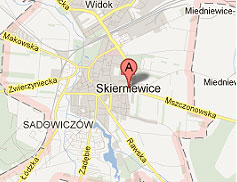PUBLIKACJE NAUKOWE
WYSZUKAJ PUBLIKACJE
Nuclear DNA content and phenotypic traits of the Prunus rootstocks from Poland’s gene resources
Podwyszyńska M., Sitarek M., Marasek-Ciołakowska A., Kowalska U.
2020
Zemdirbyste-Agriculture, 107(1): 71-78
flow cytometry, hexaploids, pentaploids, ploidy level, plum, cherry rootstocks, tetraploids, triploids
Occurrence and detection of little cherry virus 1, little cherry virus 2, cherry green ring mottle virus, cherry necrotic rusty mottle virus, and cherry virus A in stone fruit trees in Poland
Komorowska B., Hasiów-Jaroszewska B., Czajka A.
2020
Acta Virologica, 64(1): 100-103
little- cherry virus 1, little cherry virus 2, cherry green ring mottle virus, cherry necrotic rusty mottle virus, cherry virus A, RT-PCR
Ocena efektywności nawadniania i nawożenia sadu gruszowego na glebie lekkiej
Wójcik K., Treder W., Wójcik P.
2020
Nauki przyrodnicze - Flora i ochrona środowiska. Red. J. Nyćkowiak, J. Leśny. Wyd. Młodzi Naukowcy, Poznań: 56-62. ISBN: 978-83-66392-59-5
Oregano – właściwości i wykorzystanie przez ludzi
Suska O., Turkot O., Sikorska-Zimny K.
2020
Innowacje w Pielęgniarstwie i Naukach o Zdrowiu, 2(5): 124-136
lebiodka, zastosowane, zdrowie ludzi, skład chemiczny
Owoce i warzywa, świeże i przetworzone – różne zalecenia dotyczące spożycia
Płocharski W., Mieszczakowska-Frąc M.
2020
Przemysł Fermentacyjny i Owocowo-Warzywny, 3: 20-24
owoce, warzywa, diety, zalecenia, kontrowersje
Parameters of drainage waters collected during soilless tomato cultivation in mineral and organic substrates
Dyśko J., Szczech M., Kaniszewski S., Kowalczyk W.
2020
Agronomy, 10(12): 2009
soilless substrates, nutrient concentration, physical properties, microorganisms
Phylogenetic, genetic, and phenotypic diversity of Pseudomonas syringae pv. syringae strains isolated from citrus blast and black pit in Tunisia
Abdellatif E., Kałużna M., Ferrante P., Scortichini M., Bahri B., Janse J.D., van Vaerenberg J., Baeyen S., Sobiczewski P., Rhouma A.
2020
Plant Pathology, 69(8): 1414-1425
cop, copper resistance MLSA, hop, hrp, phylogroups
Plant-feeding nematodes associated with Miscanthus × giganteus and their use as potential indicators of the plantations’ state
Stefanovska T., Skwiercz A., Zouhar M., Pidlisnyuk V., Zhukov O.
2020
International Journal of Environmental Science and Technology, 18: 57-72
Bioindicators, Perennial grass miscanthus, Plant-parasitic nematodes, Spatial–temporal distribution
Planting evaluation of series of yellow-green apple varieties in yantai
Xin C., Lingling Z., Kruczyńska D.E., Xiaoyun D., Meiying L., Zhongwu J., Laiqing S.
2020
Chinese Fruits and Vegetables, 7: 76-79
Poradnik sygnalizatora ochrony brokułu
Włodarek A., Kałużna M., Sekrecka M., Stępowska A.
2020
Red. A. Włodarek. Wyd. Instytut Ogrodnictwa, Skierniewice: 83 s. ISBN: 978-83-65903-92-1
INSTYTUT OGRODNICTWA – PAŃSTWOWY INSTYTUT BADAWCZY
Siedziba Dyrekcji
ul. Konstytucji 3 Maja 1/3
96-100 Skierniewice
Tel.: 46 833 22 11 do 13 - Centrala
Fax: 46 833 31 86
e-mail: io@inhort.pl
ul. Pomologiczna 18
96-100 Skierniewice
Tel.: 46 833 20 21 - Centrala, 46 833 42 23 - Centrala
Fax: 46 833 32 28
ZAKŁAD PSZCZELNICTWA
W PUŁAWACH
ul. Kazimierska 2A
24-100 Puławy
Tel.: 81 886 42 08, 81 886 21 64
Fax: 81 886 42 09
e-mail:zaklad.pszczelnictwa@inhort.pl
© Copyright 2011 Instytut Ogrodnictwa, wszystkie prawa zastrzeżone / Kontakt: < Redaktor > < Webmaster >


